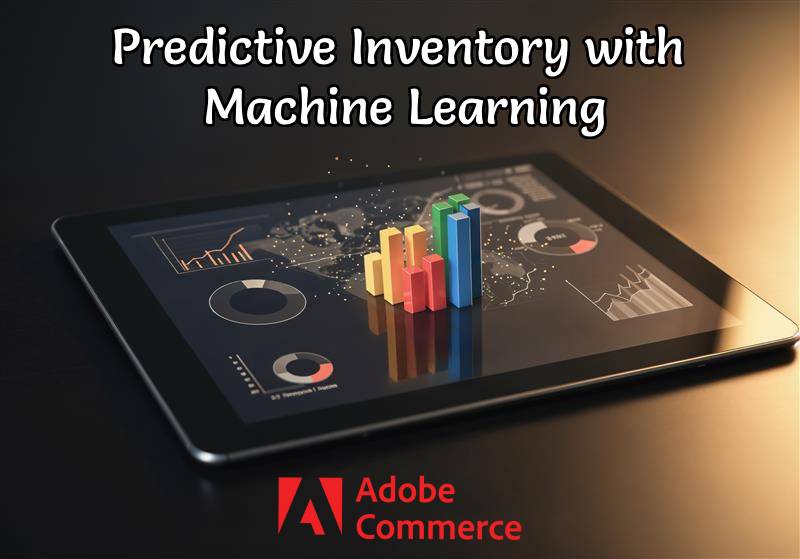Predictive inventory, powered by machine learning, is crucial for e-commerce businesses to stay ahead of demand and deliver an excellent customer experience. By integrating predictive inventory capabilities into adobe commerce, merchants can forecast demand and make better decisions on product stocking, replenishment, and promotions, enhancing operational efficiency and customer satisfaction.
What is predictive inventory?
Predictive inventory management is a method that uses data analytics and machine learning models to predict product demand before it occurs. It helps businesses stock the right products, in the right quantities, at the right time. Machine learning models analyze historical sales patterns, customer activity, and external factors to predict which products will likely surge in popularity.
They also identify products about to stagnate or decline, such as declining sales, decreased page views, negative reviews, or market saturation. Adobe commerce role is to validate predictions using inventory turnover ratios and aging reports. Predictive inventory systems also consider seasonality, promotions, and market trends to determine inventory levels. Multivariate models combine different factors, and event-based forecasting integrates promotional calendars into demand models.
Optimizing inventory levels with real-time data
Inventory management can be balanced with the use of machine learning, which offers real-time modifications based on changing data. The system can monitor market fluctuations, client demand, and sales patterns when coupled with adobe commerce. It can then automatically adjust stock levels depending on the most recent data without requiring any human intervention.
Smarter replenishment and automated restocking
Adobe commerce integrates machine learning models with traditional inventory restocking systems, transforming the process from time-consuming to efficient. The system optimizes replenishment schedules based on demand forecasts, lead times, and vendor performance, generating purchase orders automatically, reducing human error, and ensuring product availability without overstocking.
Cutting expenses and increasing profits with ML-powered insights
ML-powered predictive inventory helps entities prevent overstocking and balance stocking to satisfy customer demand, increasing profit margins and cutting expenses. Businesses can plan ahead, make strategic procurement decisions, and identify underperforming product categories and slow-moving inventory with adobe commerce, which is powered by machine learning algorithms. This leads to lower storage costs, fewer liquidation sales, and better sales tactics.
Enhancing campaigns and promotions with predictive inventory
Adobe commerce predictive inventory feature optimizes promotional strategies by predicting the impact of promotional campaigns on product demand. Machine learning models can predict popular products, allowing businesses to adjust inventory in advance. Predictive inventory also helps fine-tune discounting strategies by analyzing price elasticity and promotional periods, ensuring promotions are well-timed and aligned with market trends, increasing conversion rates, customer acquisition, and ROI.
In summary, adobe commerce uses ML to enhance inventory management, aligning with customer expectations and market conditions and reducing operational inefficiencies and storage costs. It enhances customer satisfaction and business profitability, ensuring future-proofing and delivering customer-centric shopping experiences.
Please reach out to marketing@tychons.com for your adobe commerce predictive inventory solutions

